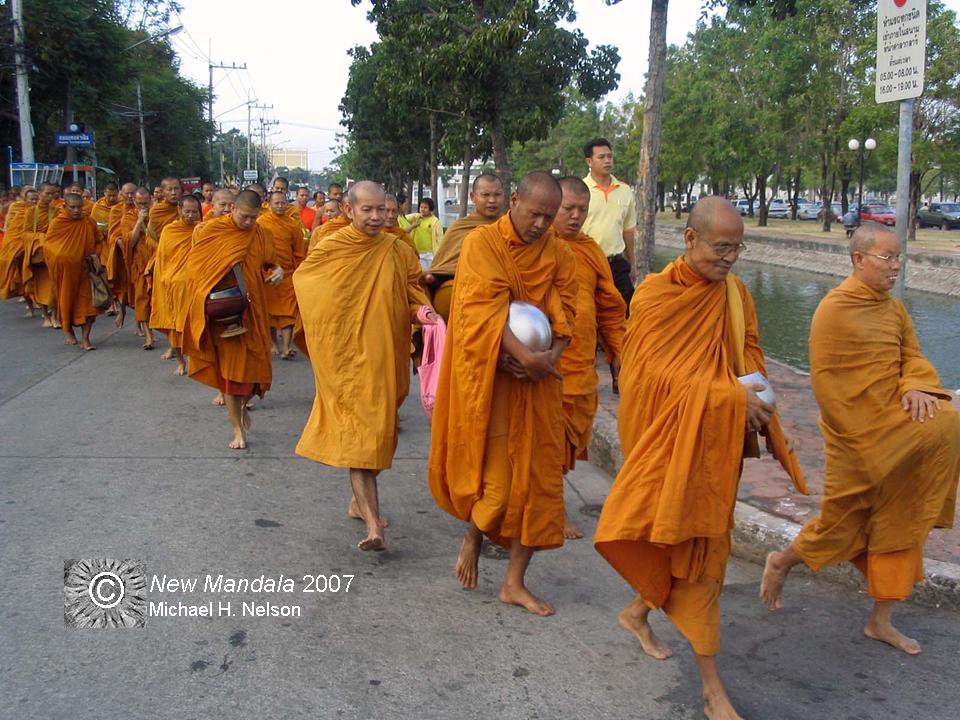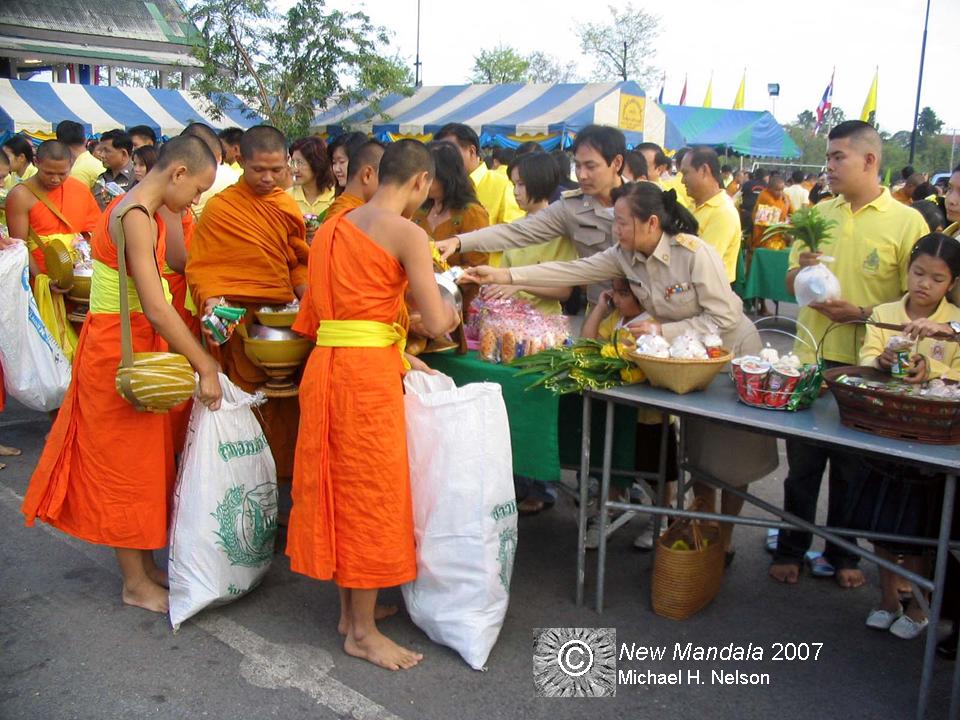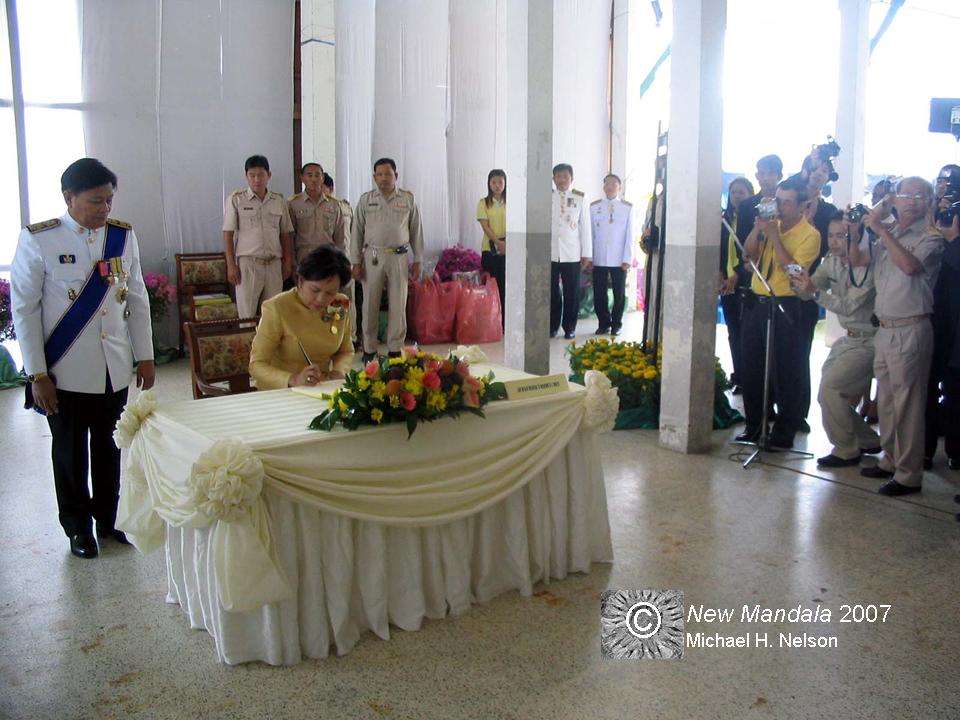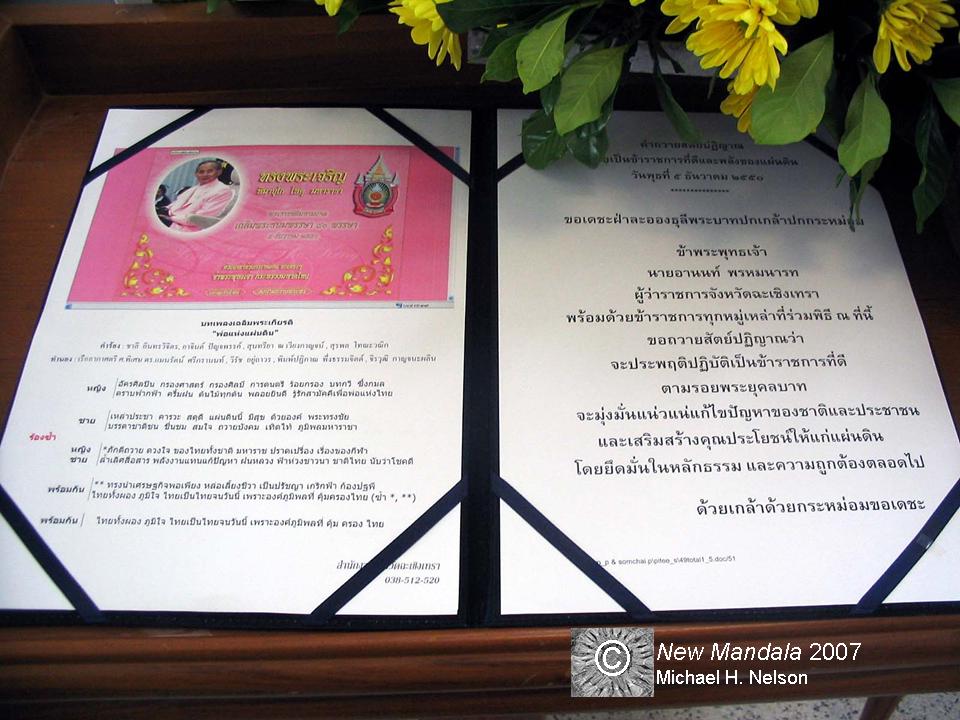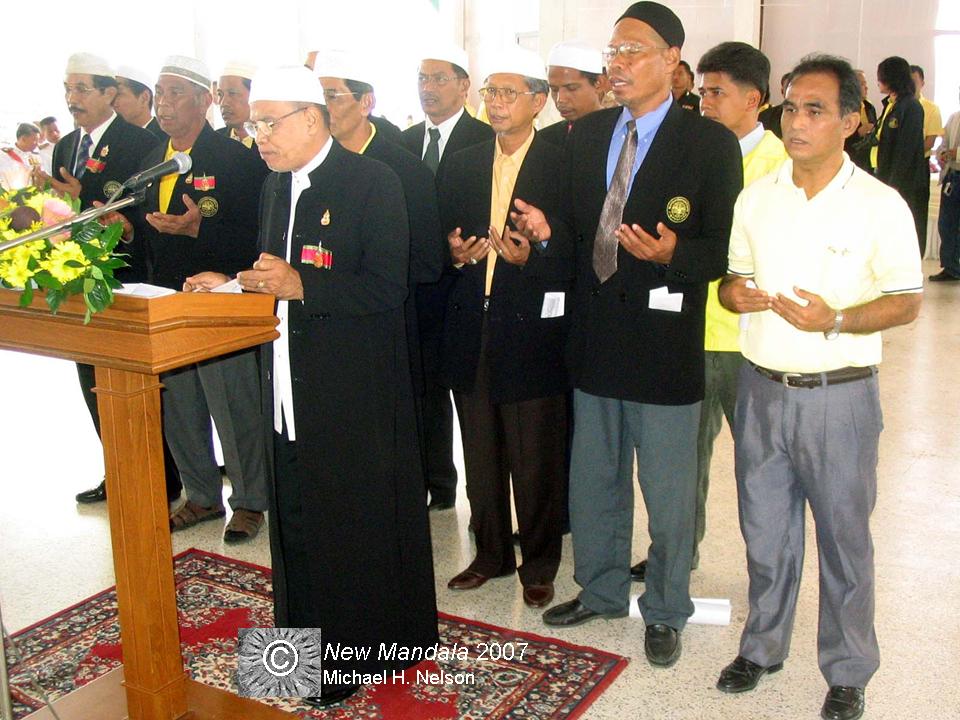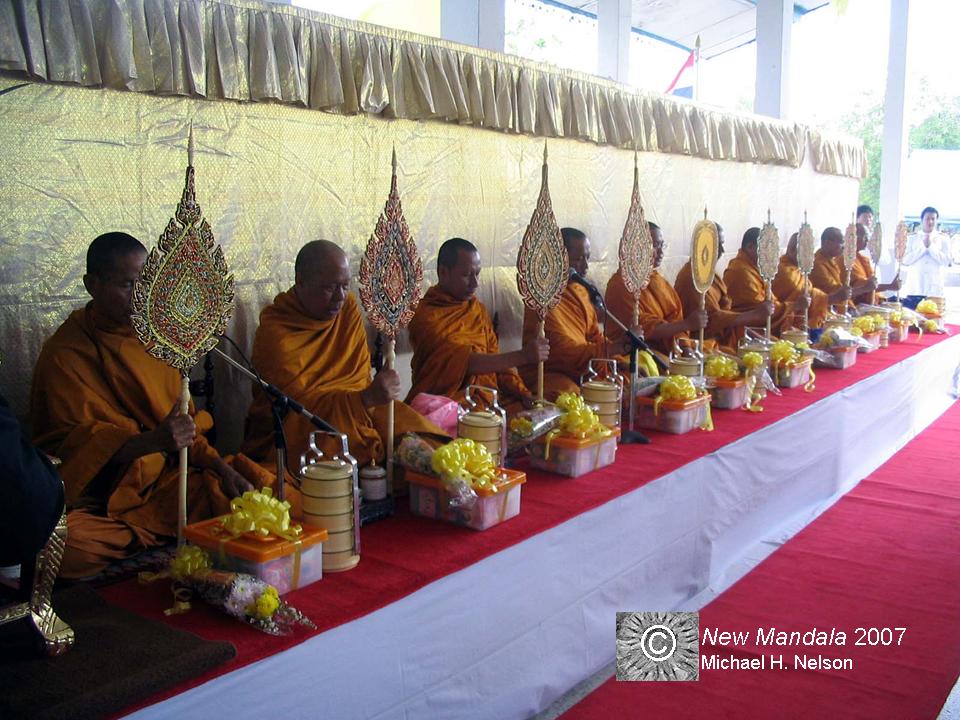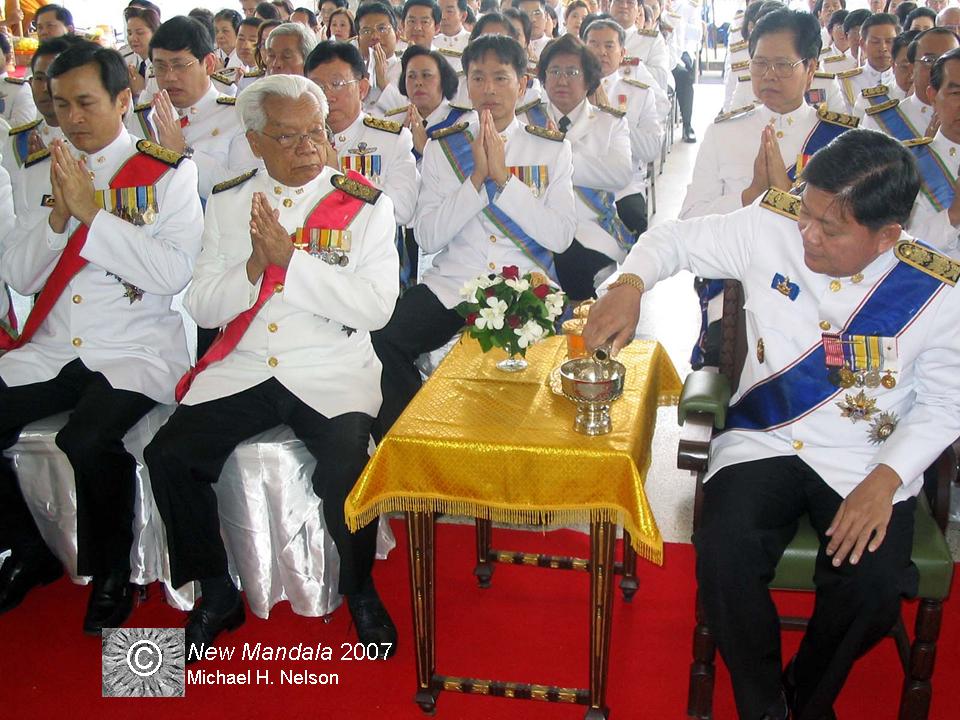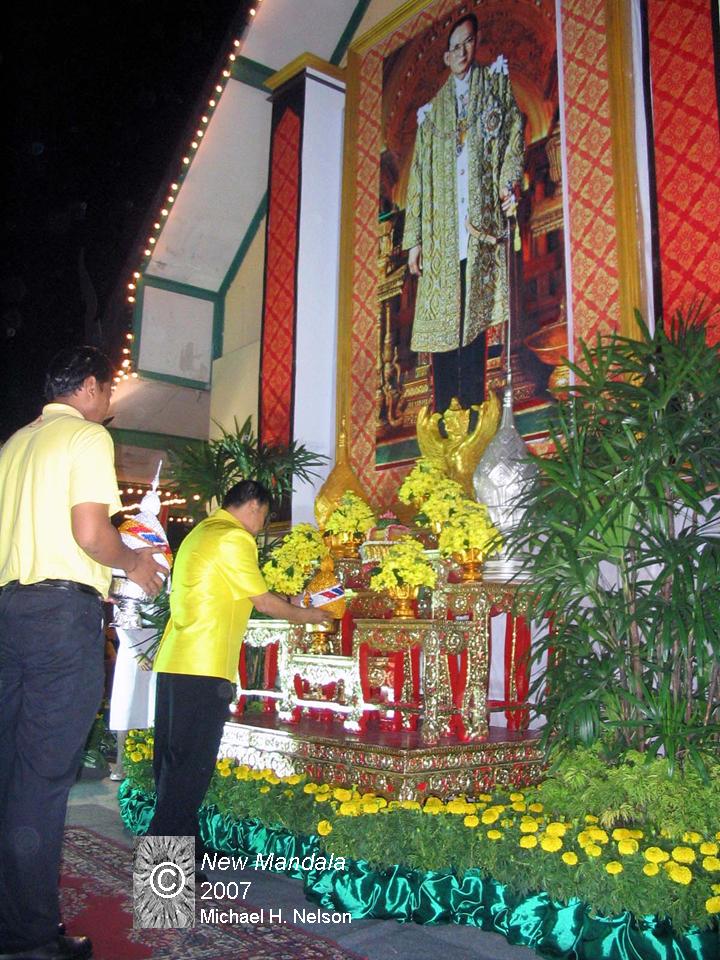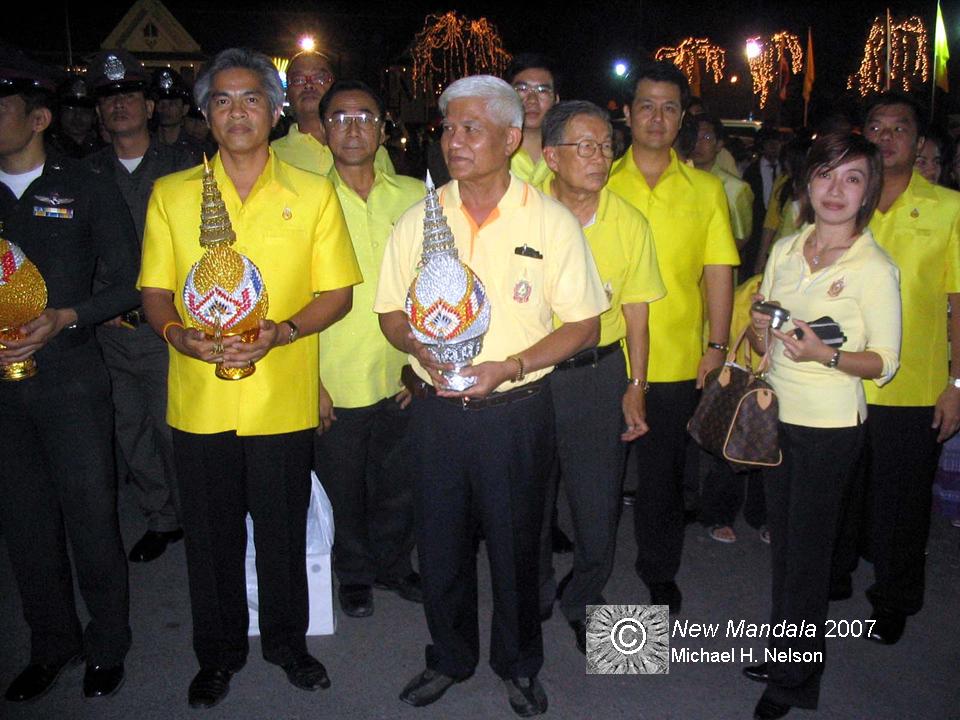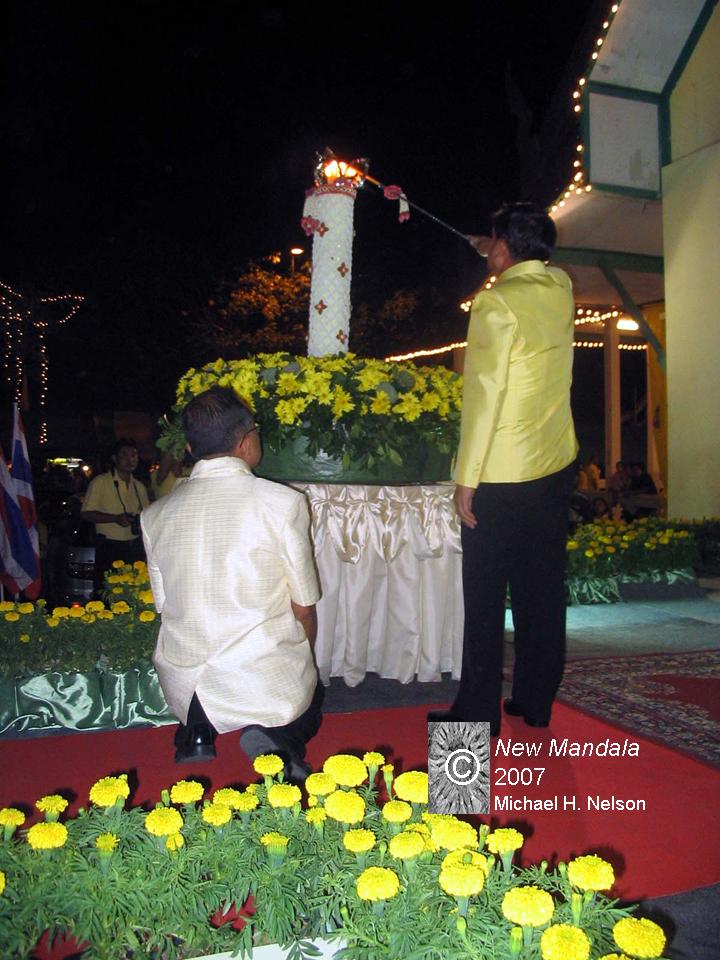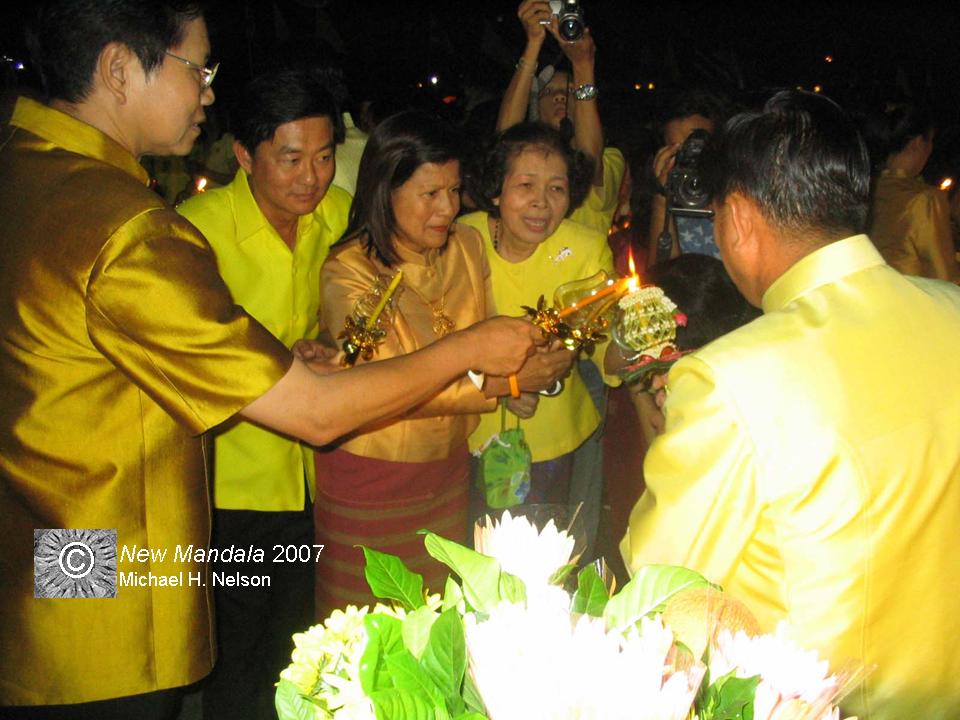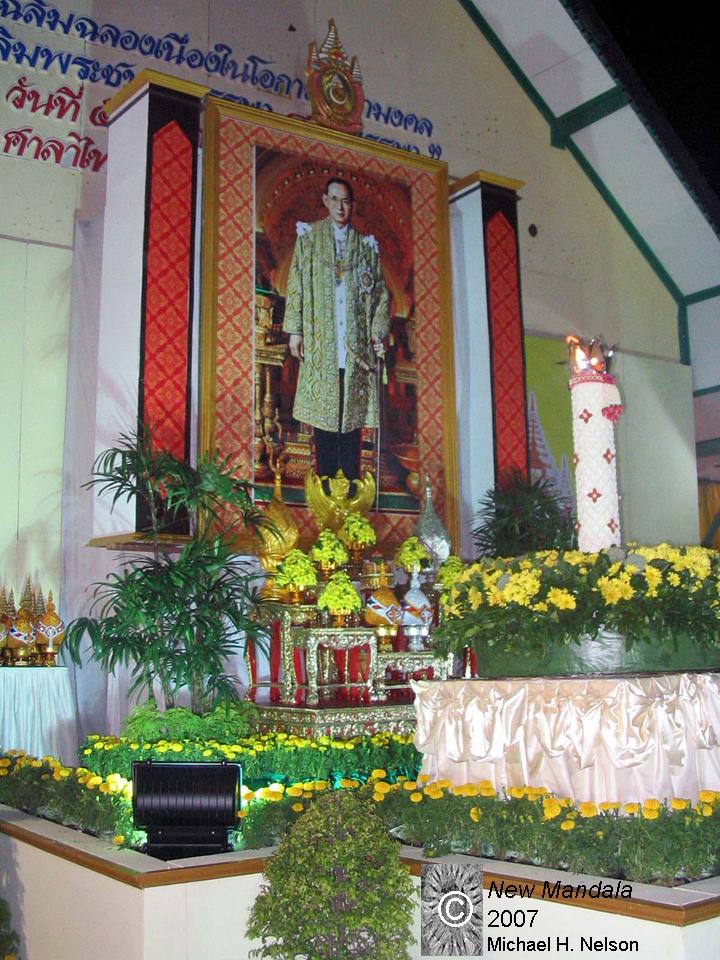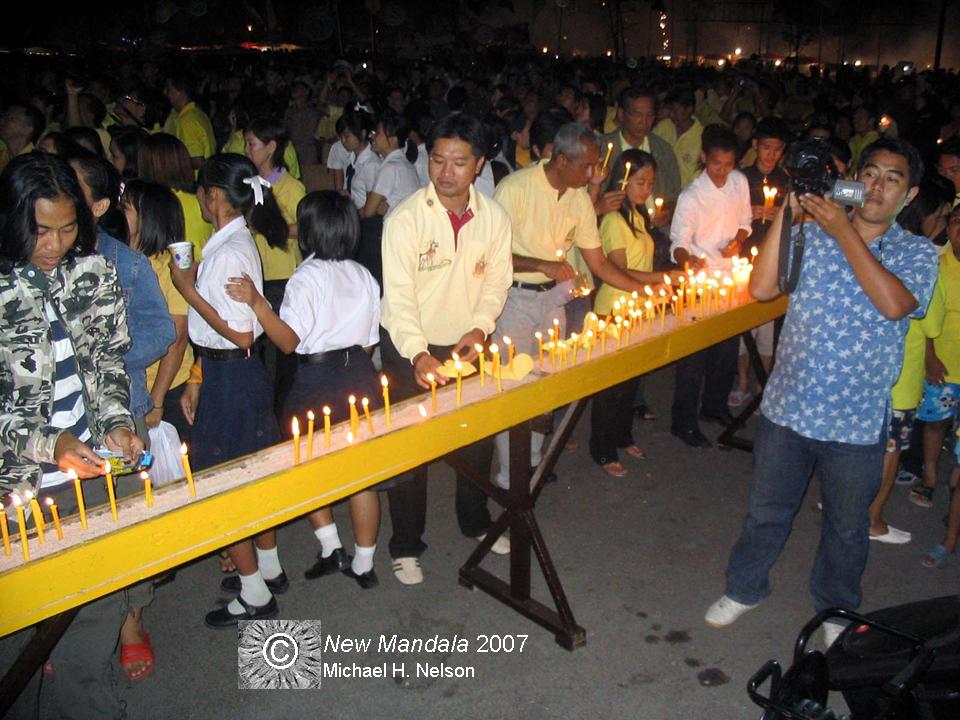On December 5, 2007, something more important than electoral politics occupied public and official spaces as well as the thoughts and feelings of a great number of Thais-the King’s 80th birthday anniversary. By default, this event also provided yet another occasion to reproduce the conservative trinity of “Nation, Religion, Monarchy.” If anything, this theme was made more important by the King’s birthday speech one day earlier, in which he had warned that without unity (samakkhi) the country might plunge “into disaster” (Bangkok Post, Dec. 5, 2007). He reiterated this in his brief address to well-wishers from the balcony of the Grand Palace. The Bangkok Post (Dec. 6, 2007) wrote, “It was the third time this week the King has spoken of unity. In a speech given to soldiers taking part in Trooping the Colours on Sunday the King called for unity among the armed forces and all Thais, saying that the situation was unstable. He urged them to put national security above all else.”
The regional branches of the national bureaucracy-representing the “Nation”-all over the country, both at the district and provincial levels, and even most or probably all local government authorities, educational institutions, etc. organized more or less extensive ceremonies in celebration of the King’s birthday. In Chachoengsao, I observed this event at the provincial level. Its morning part started shortly after 7 o’clock in the morning when representatives of dozens of state units, supplemented by a number of private citizens, gathered behind long rows of tables and even chairs arranged on the square in front sala thai opposite the provincial hall for a making merit. Picture 1 shows the Buddhist monks on their way from the provincial hall turning left into the square.
Picture 1
In picture 2, officials of the office of the provincial election commission are seen putting offerings into the monks’ bowls. The monks also carried somewhat less spiritual sacks to cope with the amount of offerings; huge baskets were also used for this purpose.
Picture 2
After this merit making ceremony, the proceedings moved to inside sala thai, which is an open multi-purpose hall. It will also be used for advance voting on December 15-16 for those voters who do not want to return to their provinces for the election. For some time before the official ceremony started, a table with two chairs and two albums was placed opposite a huge picture of the King so that mainly civil servants wearing white uniforms could write down their best birthday wishes to the King. All the while, groups of civil servants had pictures taken in front of the picture of the King. The official part started when the provincial governor arrived to perform this same act. Picture 3 shows him observing his wife adding her best wishes.
Picture 3
In picture 4 we see Chaturon Chaisaeng, one of the politically disqualified 111 former members of the executive board of the dissolved Thai Rak Thai party, signing his name watched over by his wife.
Picture 4
Although this was a ceremony of and by the state bureaucracy, the seating plan also reserved three chairs for former Members of Parliament, for the executive chairperson of the provincial administrative organization (PAO), and the municipality of Amphoe Mueang. Thus it happened that in the left-hand front row next to the governor’s seat, there were two vice governors framed by three Chaisaengs, led by the family patriarch Anand, and their ally from the PAO. As far as I could see, no other national or local-level politicians or office holders were present.
After the governor had lit the candles of the Buddhist shrine, with ten monks sitting on the podium to the right, a brief prayer was spoken, followed by the governor performing a short ceremony at the shrine in front of the King’s picture. This included the removal of the banana-leafed cup from a tray with flowers, and the placing on the shrine of one silver-colored (right-hand side) and gold-colored (left-hand side) lotus-bud shaped (artificial) flower offering on trays. Afterwards, he addressed the King. In fact, of course, the governor is by far too lowly a person that he could dare address the King on a person-to-person basis. Rather, he had to use a phrase beloved by more egalitarian-minded democrats, namely “kho decha fa laongthuli phrabat pokklao pokkramom.”
Picture 5 shows the governor facing the King and also that every one of his steps was comprehensively covered by the local press and officials from the provincial hall. Part of the governor’s task included leading the singing of the official birthday song for the King, “Father of the Land,” and speaking the vow of the civil servants to confirm that they were good civil servants and the “force of the land,” that they would work for solving the nation’s and the people’s problems, increase the nation’s wealth, and adopt morality and correctness in the performance of their duties.
Picture 5
Picture 6 shows the governor’s lectern with the text of the song on the left and the text of the vow on the right.
Picture 6
The Muslim population of Chachoengsao was given a special occasion to relate their best wishes to the King. In picture 7, we see the Muslim delegation in a brief prayer, after their leader had addressed the King.
Picture 7
The Buddhist merit making concluded after the governor and other officials had offered food to the monks. While the monks were chanting (picture 8), and the rest of the audience put the palms of their hands together in prayer, the governor performed the act of kruat nam by slowly pouring water from a small bottle into a bowl sitting on a tray. This act is necessary to make the merit-making ceremony complete.
Picture 8
Picture 9 shows the governor pouring the water into the bowl, while Anand Chaisaeng seemed interested in how the governor would do this. To Anand’s left is Chaturon Chaisaeng, apparently in contemplation.
Picture 9
For the last part of the morning part of the event, the audience had to stand in order to observe a television broadcast of the royal motorcade driving to the Grand Palace, before they watched the addresses of the Crown Prince, the prime minister, the speaker of the National Legislative Assembly, and the president of the Supreme Court. The crowning highlight at the end was the brief address by the King himself, as mentioned above. For this broadcast, the Chachoengsao Technical College had provided flat screens. Picture 10 shows the King on one of the two screens while delivering his address.
Picture 10
The evening part brought thousands of people to the square and the wider field between the provincial hall and sala thai. There were innumerable food stalls, a likey stage and a giant movie screen. People, mostly officials and related agencies, offered their best wishes to the King, for which his picture and the shrine had been moved to the outer wall of sala thai. Picture 11 shows the head of a delegation placing the gold-colored tray with the “lotus-bud”, while another person holds the silver-colored version.
Picture 11
In picture 12, we see the delegation of the provincial chamber of commerce waiting for its turn. The man to the left did most of the organizational work of the provincial branch of the Constitution Drafting Assembly during its two hearing stages. The lady to the right was his main administrative assistant and thus took care of all the organizational details. In between are one former and one present member of the PAO Assembly. The one on the right owns a big accountancy company, is the deputy chairperson of the chamber, and thus presented the “lotus buds” to the King. By the way, these are not permanent offerings. Rather, the hospital nurses officiating at this ceremony would place them on tables on the left and right side of the picture to make space for more such offerings. At the end of the ceremony, the delegations would go there and take them back for use on the next occasion.
Picture 12
After the governor had placed his offerings at the shrine and delivered his address, he lit a huge candle (picture 13). When he had left the stage, many officials flocked to him to get their candles lit by his. Picture 14 shows this. The lady third from left is the head of the provincial section of the community development department. I have met her a number of times and talked to her while I accompanied the provincial CDA to its public hearings. She was appointed an advisor to this group. The officials then lined up behind the governor and sang a number of songs.
Picture 13
Picture 14
Picture 15 shows the governor backed up, from right to left, by Chaturon Chaisaeng, his wife, a municipal councilor who is the wife of the executive chairperson of the PAO, and the wife of the governor. Their view was similar to what is shown in picture 16. The official part was concluded with a school brass band playing the royal anthem (I hope that I got this right).
Picture 15
Picture 16
Ordinary people then placed their candles in sand containers placed in front of the stage (picture 17). On the right is a cameraman from a local cable television station. I joked to him that we were amongst the very few people at this event who did not wear yellow shirts. He laughed and said that he had been assigned to cover this event on short notice, with no time to change clothes.
Picture 17
The entire event ended with spectacular fireworks. Since its was located relatively near to the stage, some paper debris rained down on the people, which did not, however, affect their (and my) enjoyment.
 Facebook
Facebook  Twitter
Twitter  Soundcloud
Soundcloud  Youtube
Youtube  Rss
Rss 
